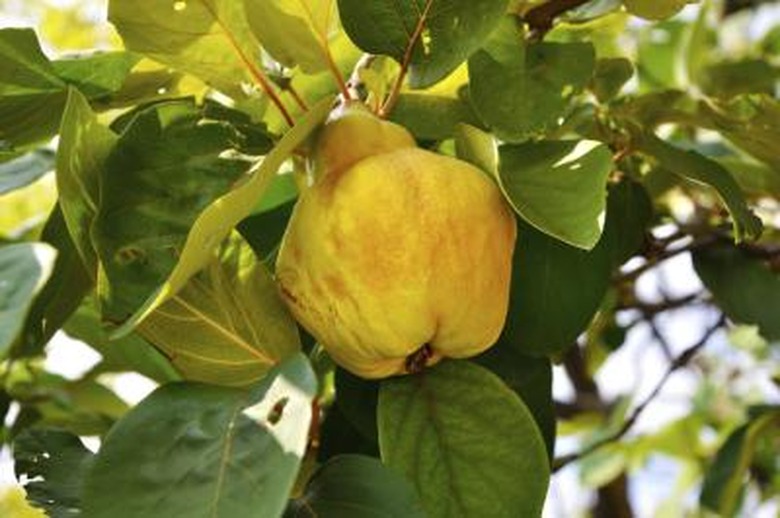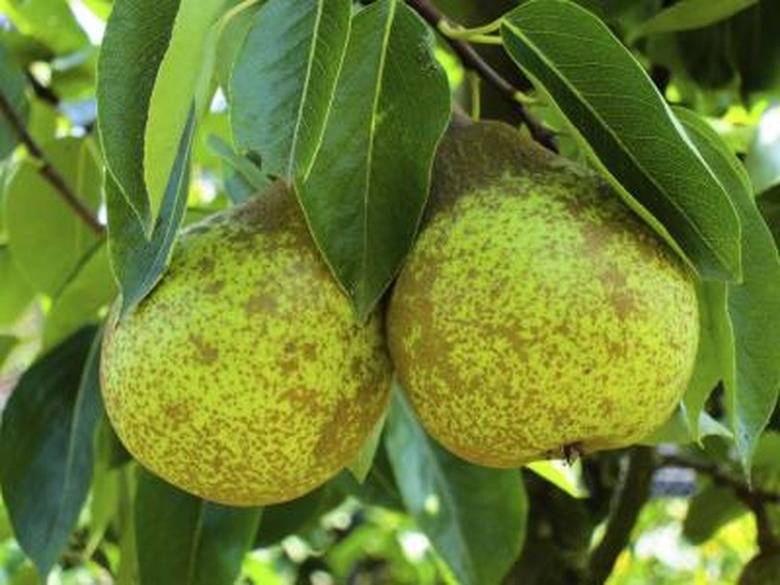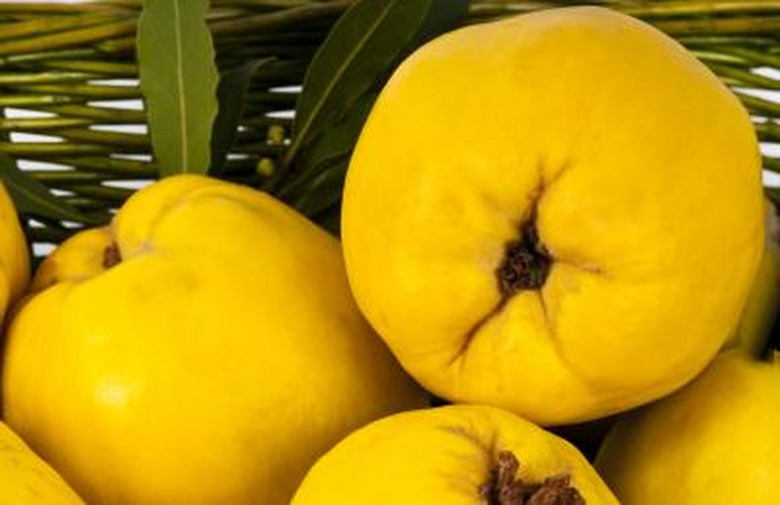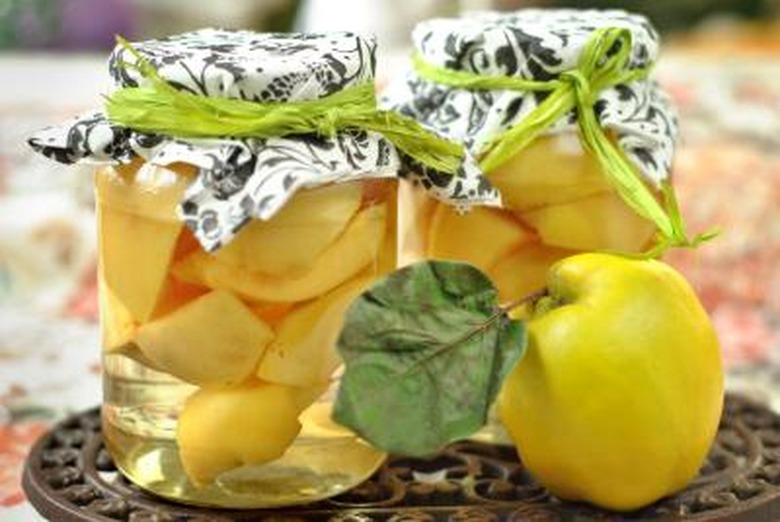How Do I Know When Quince Is Ripe?
Quince are closely related to apples and pears. The fruits resemble short-necked yellow pears but have a fragrance and flavor that is a cross between pear and pineapple. Most quince fruits are cooked prior to eating, though a fully ripened fruit is juicy and suitable for eating raw. Quince grow in warm climates that experience little winter freezing. Whether harvesting the fruits from your own tree or choosing quince at the grocery store, bringing home the ripest fruit ensures the best flavor and aroma.
Step 1
Inspect the quince for color. Ripe fruits are deep yellow with slightly fuzzy skin. Avoid green fruits and those that still have green spots on them.
- Quince are closely related to apples and pears.
- The fruits resemble short-necked yellow pears but have a fragrance and flavor that is a cross between pear and pineapple.
Step 2
Press your thumb lightly into the side of the quince. Ripe quince has a firm but springy surface.
Step 3
Smell the quince. Fully ripened quince produce a strong aroma that is reminiscent of flowers or vanilla with a hint of pineapple scent. If a quince isn't fragrant then it isn't ripe.
Step 4
Harvest quince after the first light frost when the fruits begin falling from the tree to ensure maximum ripeness. Fully ripened quince only require a slight tug to harvest.
- Press your thumb lightly into the side of the quince.
- Fully ripened quince produce a strong aroma that is reminiscent of flowers or vanilla with a hint of pineapple scent.
Ripen A Quince
Leave the quince fruit on the tree until the outside of the fruit turns from pale green to yellow. Place it in a box for transport. Place quinces on trays so the fruits are not touching each other and place the trays in a dark, cool spot for six to eight weeks before use. Store quinces away from apples.
Warning
Unlike quince trees, ornamental quince shrubs produce inferior fruit that isn't suitable for eating.
Tip
Quince are used in pies, jams and other dessert dishes. Quince will continue to ripen after harvest. Place unripened quinces in a bowl on the counter to finish ripening.



